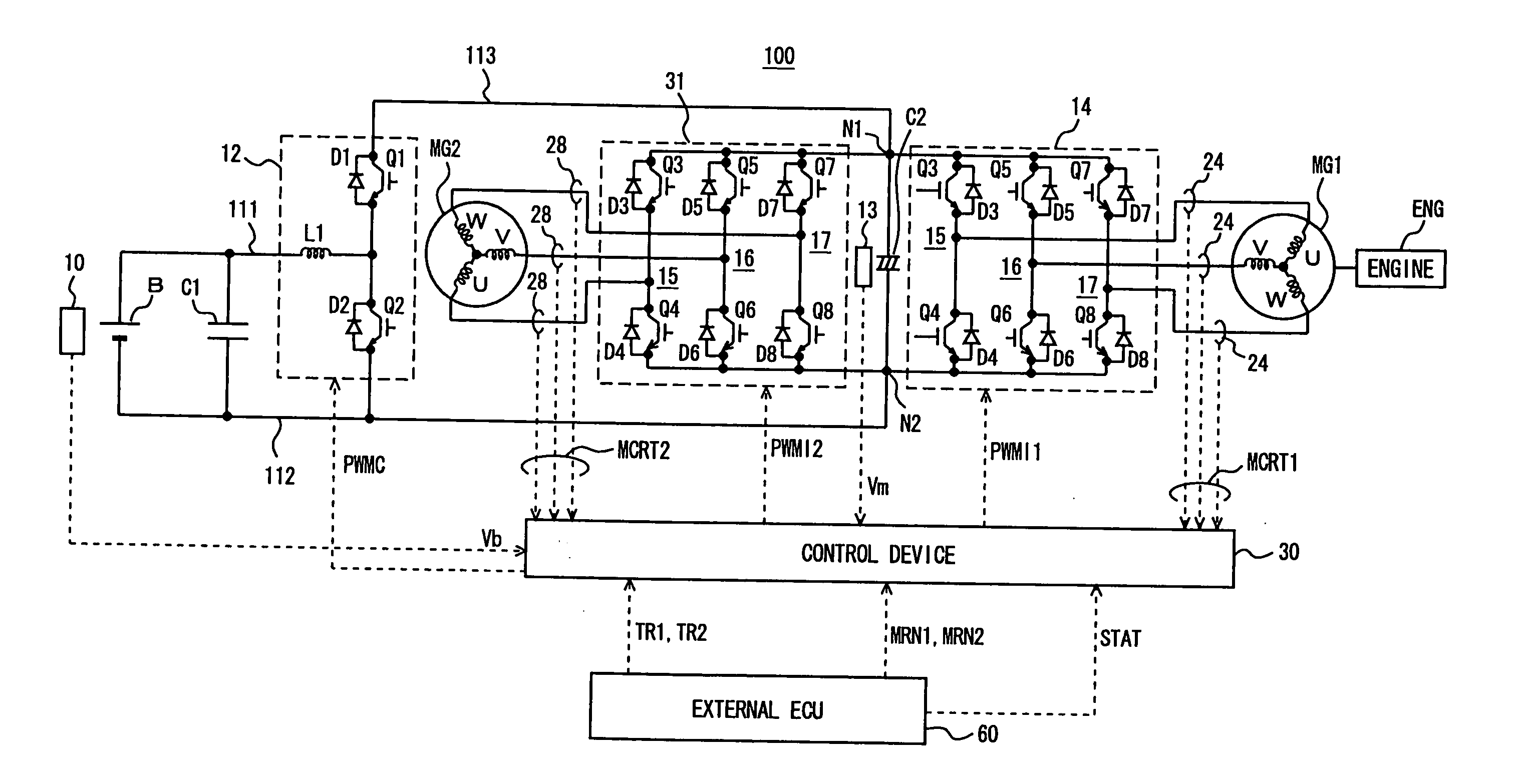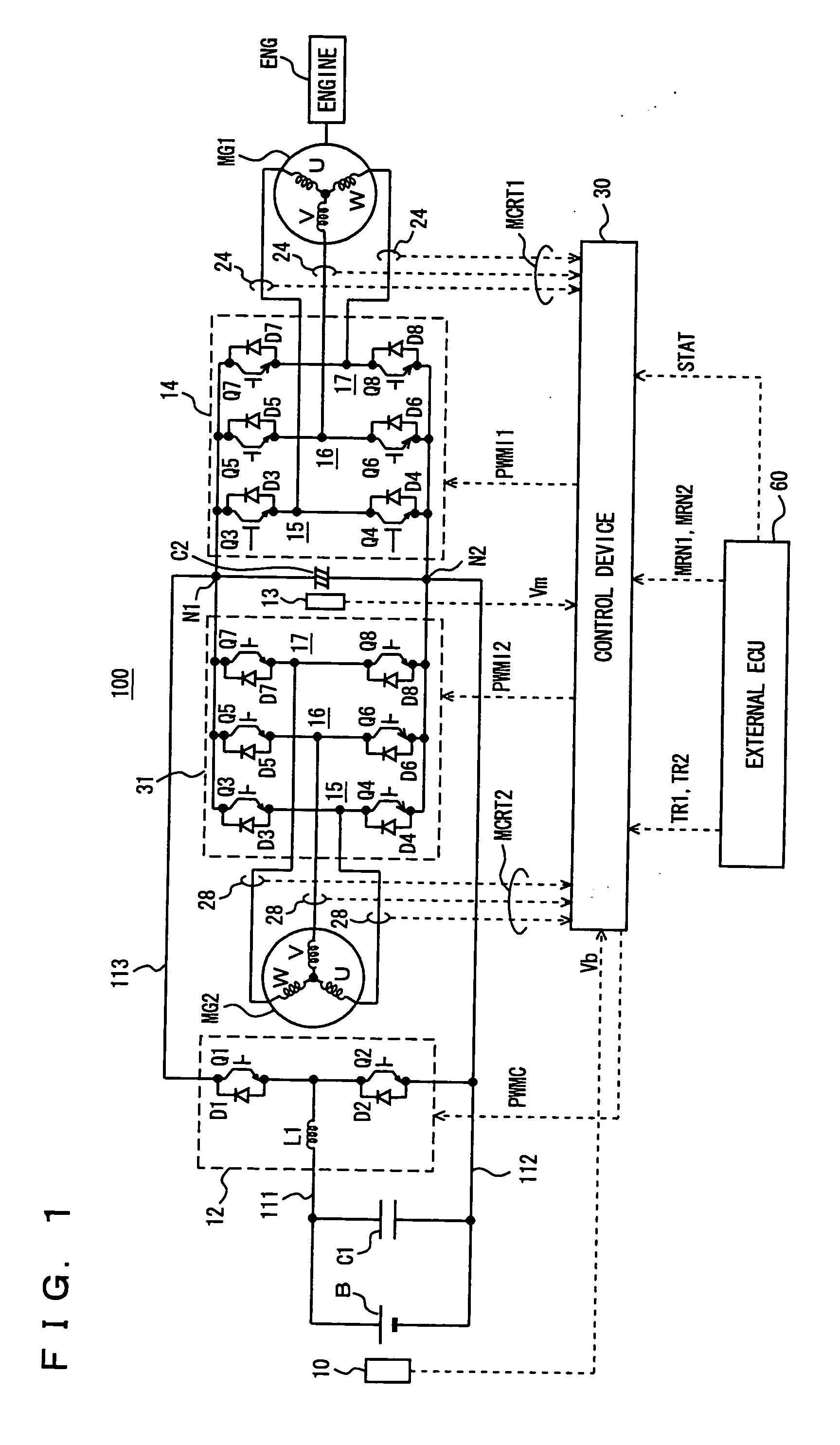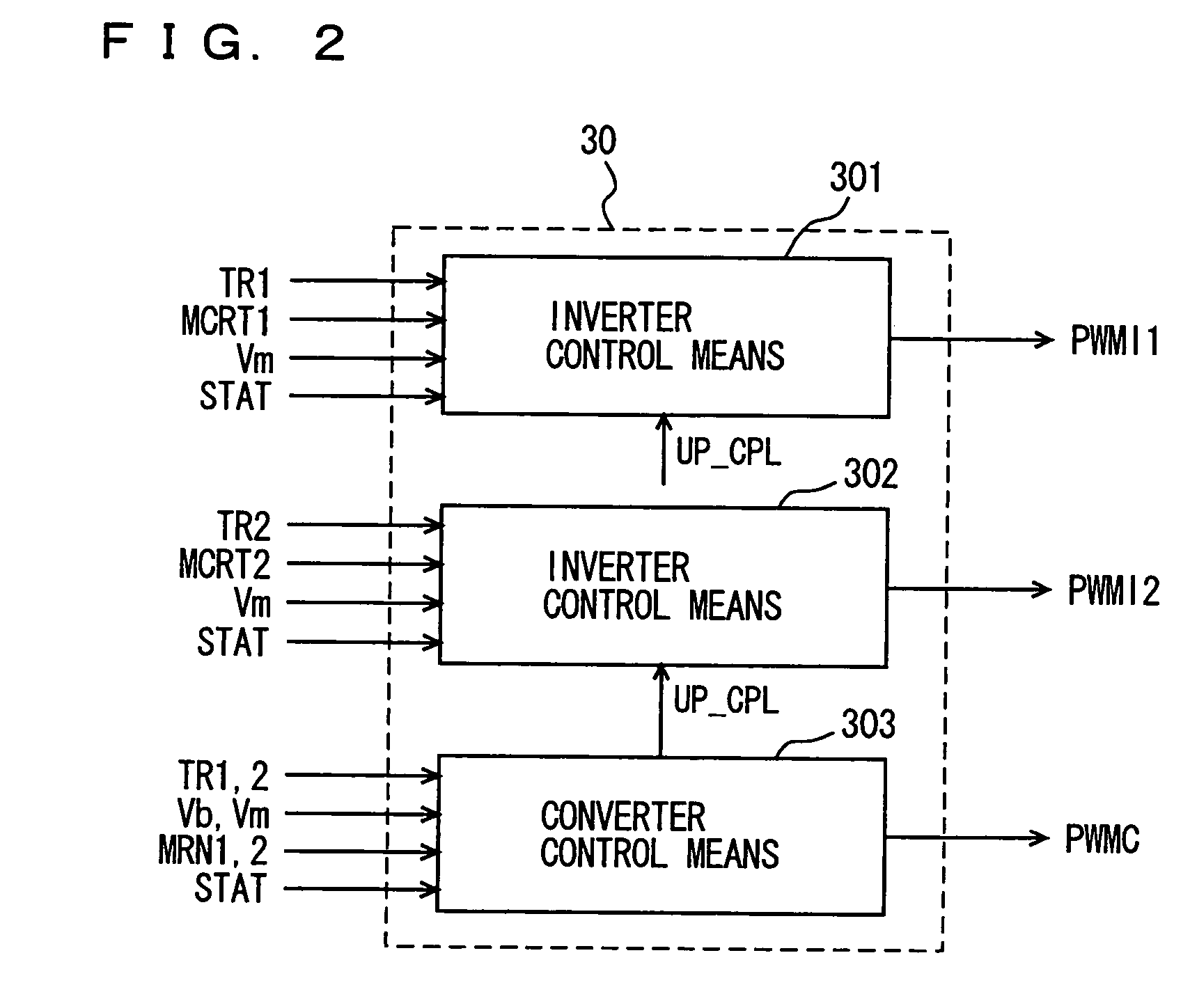Motor drive apparatus
a motor drive and motor technology, applied in the direction of electric generator control, dynamo-electric converter control, dynamo-electric gear control, etc., can solve the problems of excessive electric power being brought from the asynchronous machine to the battery, and excessive electric power being taken from the battery to the asynchronous machin
- Summary
- Abstract
- Description
- Claims
- Application Information
AI Technical Summary
Benefits of technology
Problems solved by technology
Method used
Image
Examples
first embodiment
[0059]FIG. 1 is a schematic diagram of a motor drive apparatus according to a first embodiment of the present invention. Referring to FIG. 1, motor drive apparatus 100 in the first embodiment of the present invention includes a battery B, capacitors C1, C2, voltage sensors 10, 13, a voltage step-up converter 12, inverters 14, 31, current sensors 24, 28, and a control device 30.
[0060] A motor generator MG 1 is coupled to an engine ENG mounted on a hybrid vehicle. Motor generator MG1 functions as an electric generator that generates an AC voltage from a rotational force from engine ENG and also functions as an electric motor that starts engine ENG. Further, a motor generator MG2 is a drive motor for generating torque for driving drive wheels of the hybrid vehicle.
[0061] Battery B is connected between a power supply line 111 and a negative bus 112 of inverters 14, 31. Capacitor C1 is connected between power supply line 111 and negative bus 112 and in parallel with battery B. Capacito...
second embodiment
[0152] As described above in connection with the first embodiment, in motor drive apparatus 100 in FIG. 1, two motor generators MG1, MG2 each function as an electric generator generating an AC voltage in regenerative mode and function as an electric motor in powering mode for driving engine ENG or the drive wheels, depending on the running state of the vehicle.
[0153] Regarding the power balance of motor drive apparatus 100 as a whole, supposing that the power consumed by one motor generator (one of MG1 and MG2) driven in powering mode is represented by Pm, the power generated by the other motor generator driven in regenerative mode is represented by Pg, and the power input / output to / from capacitor C2 is represented by Pc, power balance P can be represented by expression (1):
P=Pm+Pg+Lg+Lm+Pc (1)
where Lg, Lm represent respective power losses of the motor generators.
[0154] As clearly seen from expression (1), as long as power balance P is “0,” namely there is a balance between t...
third embodiment
[0200] According to the above-described first and second embodiments, when engine ENG is started, the timing at which the power required for voltage step-up by voltage step-up converter 12 is the maximum and the timing at which the power required for driving motor generator MG1 is the maximum are set at different timings and thus excessive electric power can be prevented from being taken from battery B.
[0201] Here, battery B has its battery output that considerably decreases when battery temperature BT is relatively low or relatively high as described in connection with the second embodiment. For example, as seen from FIG. 13, in the low-temperature region where battery temperature BT is lower than T2 and the high-temperature region where battery temperature BT is higher than T5, respective magnitudes of battery input Win and battery output Wout considerably decrease with respect to a predetermined electric power level in the region between T3 and T4. Thus, when battery temperature...
PUM
 Login to View More
Login to View More Abstract
Description
Claims
Application Information
 Login to View More
Login to View More - R&D
- Intellectual Property
- Life Sciences
- Materials
- Tech Scout
- Unparalleled Data Quality
- Higher Quality Content
- 60% Fewer Hallucinations
Browse by: Latest US Patents, China's latest patents, Technical Efficacy Thesaurus, Application Domain, Technology Topic, Popular Technical Reports.
© 2025 PatSnap. All rights reserved.Legal|Privacy policy|Modern Slavery Act Transparency Statement|Sitemap|About US| Contact US: help@patsnap.com



